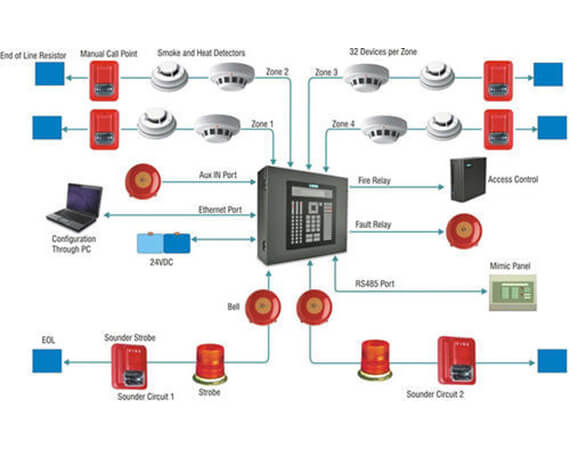


Ace Fire Services Supply, Install & Maintain all brands of Automatic Conventional Fire Alarm Systems.
Conventional detectors are designed to work with all conventional panels. These detectors are low profile and have dual LED’s for 360 degree visual indications. The LED’s are blinking in normal operating conditions whereas the steady state indicates fire status. The heat detector s use a thermostat and will raise an alarm when the detector reaches 59 C(Fixed) or when the change in temperature exceeds the rate of rise of 11 C / min.
Enquire NowThe best part about such systems is that they are very easy to install and maintain too. With just a few minute's effort, you can secure your entire building with such a system. For some highly sensitive areas like laboratories and server rooms, tripwire systems are more than enough for security.
Fire alarm systems are considered to be one of the most important security systems. With the help of fire alarm systems and monitoring station operator can give a fire warning to all clients and people who are involved with any kind of danger. The fire alarms that we provide help you to alert yourself for any kind of threat or danger.
Fire alarms are used for detecting any kind of smoke and fire. The smoke as well as fire is easily detectable by these sensors. These are connected to a central unit which gives an alarm to all concerned people. We also provide fire detectors and controllers that can be used for installation at places like hotels, offices etc.